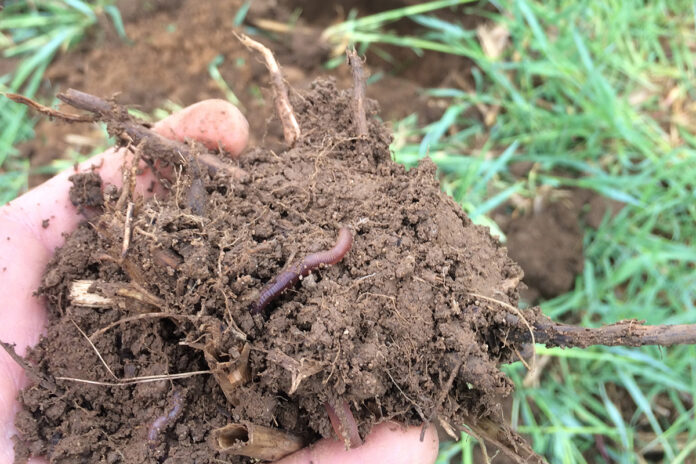
As the days get shorter and cooler, it is a good time to pause and remember your agricultural and/or natural resource accomplishments for the spring and summer. Whether it is the installation of pollinator habitat, tree planting, caring for livestock or producing a high-quality agricultural product, you did it. So, pat yourself on the back, enjoy the moment, then begin to prepare for the spring of 2024.
If you are an outdoor enthusiast, farmer or nature lover there is always a list of tasks that you would like to accomplish. We all have them. However, some people are able to move more quickly through their list than others. I am going to share some of the items on my list in hopes that you will either create your own or it will jog your memory as to where you put that list the last time you were checking off items.
Soil testing
Fall is an excellent time for soil testing. I have pulled samples from several of my fields, submitted the soil and even received the analysis. I have some amendments that I will need to make if I want a nice hay crop next summer. Much like many of the analyses that I have seen this year, my soil could benefit from some phosphorus and potash. Fortunately, I still have time to add those nutrients and allow them to be taken up by the plants. The forage plants can store those nutrients in their root reserve to help with next spring’s growth. The fertility added now should result in more hay tonnage next summer.
When you are analyzing those soil reports, be certain to look at the soil pH. This will give you an idea on the acidity of the soil. Most of the soil reports I have seen call for lime. Soil pH is important because it affects microbial activity, soil chemical reactions and nutrient availability. One really needs to consider this soil property when producing a crop.
Fighting invasive plants
This war may never end! I am blessed to have a multi-flora rose, honeysuckle, autumn olive, Canada thistle and several other invasives on my property. I use a variety of tactics to slow the spread of these awful plants. The location and time of year are the two main factors in how I attack this enemy. I use a brush hog for mowing large patches. But sometimes one must go into full hand-to-hand combat by using the cut-and-spray method. This method is fantastic as long as you are using the correct herbicide. Keep in mind there will be bloodshed when fighting a thorned enemy like a multi-flora rose.
Wildlife habitat
This one may not be on everybody’s list, but I hope that it encourages some people to consider it. I manage the grazing of my beef cows to leave grass or forage for the songbirds. I also attempt to put up as many bluebird boxes as possible. (I had a grandfather who enjoyed watching bluebirds, so it serves as a tip of the cap to him as well.) My list of winter tasks includes building more bluebird boxes and even a few cavity nest boxes from water softener tubes. These bigger nest boxes could be installed for wood duck boxes, screech owls or squirrels. And let’s not forget about brush piles. My farm lost multiple trees from various windstorms beginning in April. As I move through the clean-up process, it does not take much effort to stack the limbs in a fencerow or on the corner of the woodlot to provide habitat for wildlife.
Now you know what my fall to-do list contains, I hope this has inspired several readers to look for projects that can be completed this fall or early winter. Keep in mind that your local soil and water office can assist you with projects as I mentioned. Some soil and water conservation district offices will pull the soil samples, submit them to the lab and even interpret the soil analysis with you. Offices can also recommend the correct herbicide for the type of invasive that you are attempting to control or alternative methods of eradication. The Ohio Department of Natural Resources Division of Wildlife has a pamphlet of “Nest Box Plans” that covers wildlife species from the American kestrel to the purple martin if you need drawings and dimensions for certain critters. These pamphlets are typically available in your local SWCD office as well.
Plan to stop by your local office and see what other resources we have available to assist you with your fall project list!












